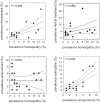Against all odds-the persistent popularity of homeopathy
- PMID: 32152694
- PMCID: PMC7253376
- DOI: 10.1007/s00508-020-01624-x
Against all odds-the persistent popularity of homeopathy
Abstract
The use of homeopathy is remarkably popular. Popularity, however, is not an arbiter in a scientific discourse. In fact, the assumptions underlying homeopathy violate fundamental laws of nature. Homeopathy does not have any explanatory power and fails other criteria established for a scientific approach. Two large-scale efforts have recently documented that in spite of a plethora of clinical trials there is no evidence that homeopathic remedies have any therapeutic effect, which goes beyond that of a placebo. Relaxed regulations and lack of scientific literacy and of health education allow for continuous thriving of homeopathy. While the tide may be changing on the regulatory side, health education of the general public is presumably more important to support informed decision making by patients. Otherwise, the responsible patient, who is posited to decide on the medical choices, remains a convenient legal fiction.
Keywords: Clinical trials; Evidence-based medicine; Homeopathy; Placebo; Responsible patient.
Conflict of interest statement
C. Cukaci, M. Freissmuth, C. Mann, J. Marti, and V. Sperl declare that they have no competing interests.
Figures



References
-
- Stehlin I. Homeopathy: real medicine or empty promises? FDA Consum. 1996;30:15–19.
Publication types
MeSH terms
LinkOut - more resources
Full Text Sources

